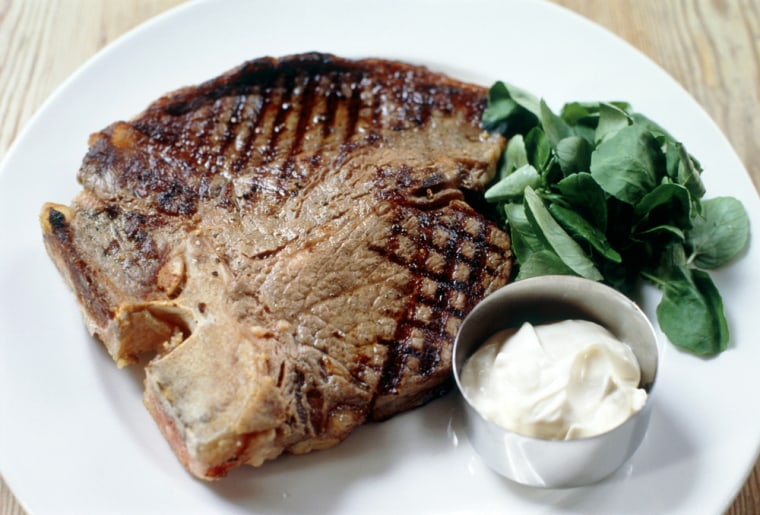If you like to dine out but are trying to watch your weight, the deck is stacked against you.
In many restaurants, a pasta bowl can hold 2 pounds. A plate of steak or fish weighing more than a pound is not unusual. Even sandwiches can contain more than 1,000 calories.
With Americans eating out more than ever and restaurant portion sizes growing steadily since the 1980s, it's no wonder our waistlines have expanded too.
A survey of 300 American chefs from casual and fine dining restaurants helps explain the portion bloat.
While three-quarters of chefs believed they prepared regular-size servings, the portions they offered were two to four times larger than a typical person should eat, according to a survey I helped conduct along with Julie Flood, a Ph.D. student in nutrition at Penn State, and Marge Condrasky, a nutrition professor at Clemson University in South Carolina. The results are due to be published this summer.
For example, a popular restaurant chain’s smallest steak is 9 ounces and has 740 calories. An appropriate portion would be 4 ounces with only 300 calories.
In fact, only 16 percent of the chefs, mostly from casual or fine dining restaurants, were strongly influenced by how many calories were packed into a serving. Instead, they were much more concerned with how the food looks on the plate, cost and customer expectations.
It's not that chefs don't know any better. Most chefs surveyed acknowledged that the amount of food served can influence how much people consume and lead to weight gain.
However, 58 percent said it's up to the customer to eat the appropriate amount, even when served a whopping plate of food.
Knowing when to stop
Since the chef isn't counting calories, it's up to you. But even when you try to watch how much you eat, many people can have a hard time knowing when it's time to stop.
At Penn State, we have also extensively tested the effects of large portions on how much people consume. Bigger portions of macaroni and cheese, submarine sandwiches and potato chips all lead to greater intake — as much as 50 percent more.
When we went into a campus restaurant and upped the size of a popular pasta dish, customers ate almost 200 extra calories. Yet they believed that each serving was the right size. Whether the consumers were men, women, lean, overweight, habitual plate cleaners or not, they succumbed to the influence of large portions.
You might say that eating more at a meal is not a big deal — you will just eat less at the next meal. Don't count on that.
In another study, we provided 10 women and 13 men with all of their foods and beverages for 11 days in a row on two occasions. On one occasion we served standard sizes. The other time, the same foods were offered, but the servings were 50 percent bigger.
With the larger portions, the men and women ate more than 400 extra calories each of the 11 days, adding up to an average of 4,636 extra calories. Remember, it takes 3,500 extra calories to gain a pound.
The evidence is clear — bigger servings tend to lead to overeating unless you learn some strategies for staying in control.
Battling bloated portions
It's not just a matter of eating less of everything on your plate. We should be eating less of some foods and more of others. It's the jumbo servings of calorie-laden foods that are high in fat and low in moisture that cause the problems. Popular restaurant fare such as entrees smothered in sauces and french fries tend to fall in this category.
Seek out low-calorie foods that are high in water and fiber content, such as vegetables, fruits and soups. When you cut your portions of fatty meats and fries, fill the gap on your plate with your favorite veggies.
Remember, the best way to combat large portions is to order from the menu wisely — and ask for a doggie bag.
Barbara Rolls is the author of “,” which offers tips on how to eat more fruits and veggies and lower the calorie density of recipes.
